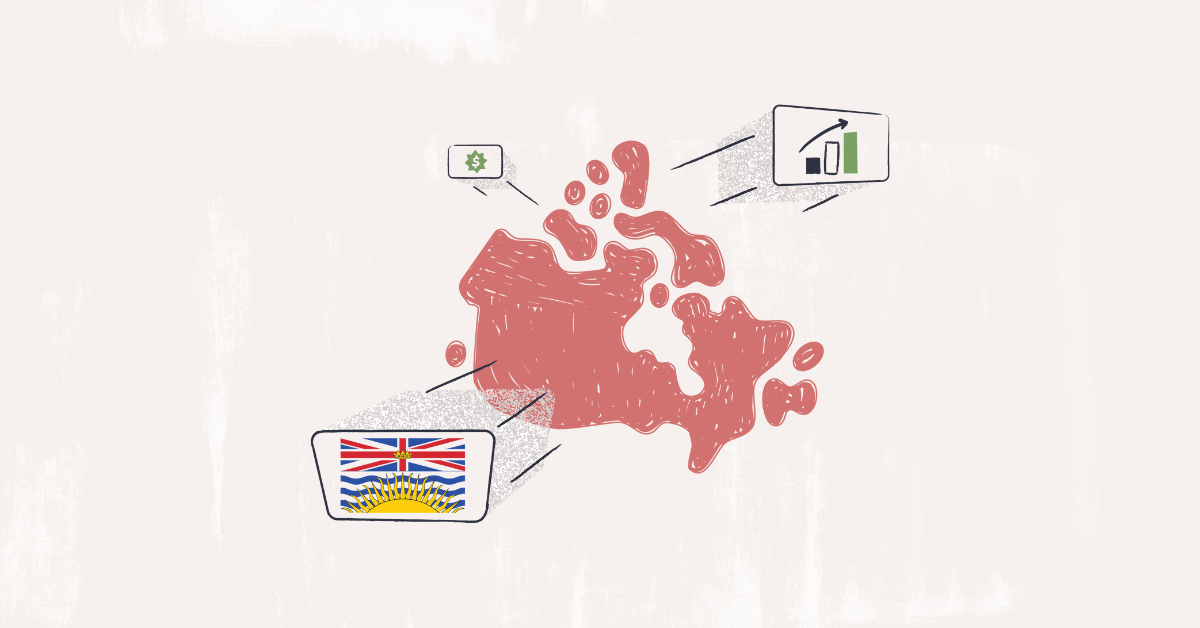Become an insider!
Get our latest payroll and small business articles sent straight to your inbox.
Running payroll in British Columbia comes with its own rules, from provincial Employer Health Tax to daily overtime and statutory holiday eligibility. This checklist keeps your business compliant and your team paid accurately. Prefer to download? Get a printable PDF here.
Let’s get started.
Step 1: Obtain a Business Account Number (BN)
Registering for a payroll account with the Canada Revenue Agency (CRA) is a crucial step for Canadian small business owners who hire employees. The process ensures you can properly deduct and remit source deductions like Canada Pension Plan (CPP), Employment Insurance (EI), and income tax
- Register for a Business Account Number (BN) if you have not already
- Determine if you need to register for a payroll account
- Gather the required documentation for your payroll account set up
- Register for a payroll account online
- After registration, you may receive a remittance form; default remitter schedule is monthly unless CRA specifies otherwise
- Recommended Read: How to Contact the CRA Without Losing Your Mind
Step 2: Register For Applicable Employer Tax Accounts
Employer Health Tax (EHT)
Some provinces charge a payroll tax to help fund their health services. The thresholds for when a business must register and pay this tax vary across Canada, so it’s important to check the requirements for your province.
-
If your annual payroll exceeds the exemption amount — $1.5M for registered charities and non-profits or $1M for all other employers — you must register for a BC EHT account. Special rules apply if you’re associated with another business.
-
Review rates and important dates that affect EHT calculations and deadlines.
Workers Compensation (WorkSafeBC)
All provinces and territories have a workers’ compensation board or commission that provides no-fault insurance for employees who are injured on the job.
- All employers with workers of any kind legally must register for WorksafeBC
- If your business or workers cross provincial or national boundaries, confirm your obligations here
- Recommended Read: What You Need to Know About Employees vs. Contractors
Step 3: Set Up Your Payroll System
- Choose a payroll system to meet your needs (See Step 4 for what it should handle)
- Choose the frequency to pay your employees (weekly, biweekly, semi-monthly, or monthly)
- Sign necessary authorizations required (eg. banking/billing, ROE SAT)
- Have all employees complete and return TD1 and TD1BC forms
- Recommended Read: 8 Must-Ask Questions When Assessing Your Current Payroll Solution
Step 4: Calculate Payroll Taxes
Ensure your payroll system can calculate, deduct, and remit the following:
- Federal Income Tax
- Canada Pension Plan (CPP/CPP2) contributions
- Employment Insurance (EI) premiums
- Provincial Employer Taxes (ex. WCB/EHT)
- Additional deductions such as RRSPs, third-party benefits, etc.
- Recommended Read: Payroll Remittance Schedules and Deadlines: A Complete Guide for Employers
Step 5: Manage Important Payroll Requirements
Statutory Holidays
- Determine applicable Statutory Holidays for British Columbia
- Review Statutory holiday eligibility requirements for your employees
- Understand Statutory holiday calculations for your employees
- Recommended Read: Statutory Holidays Pay in Canada (2025 Update)
Overtime Rules
- Determine how overtime is calculated
- Overtime, double time, averaging agreements, banking time, and rest periods
- Understand daily, weekly and statutory implications for overtime
- Recommended Read: Understanding overtime pay in Canada
Minimum Wage
- As of June 1, 2025, the minimum wage in British Columbia is currently $17.85 per hour
- Understand the roles and industries that have different minimum rates of pay
- Understand the minimum daily pay rules
- Recommended Read: Minimum Wage by Province 2025
Vacation Pay
- Determine which wages to include in vacationable earnings
- Determine how to calculate vacation pay based on length of employment
- Make special note of the following vacation pay rules:
- Vacation must be taken within 12 months of being earned
- Employees cannot skip taking vacation time and just receive vacation pay
- If the employee and employer agree in writing, vacation pay can be paid out on every pay cheque instead of accruing it
- Recommended Read: Managing Vacation Pay in Canada (2025 Update)
Termination Notice
- Determine how to calculate termination pay and notice required:
- Understand your due dates for paying final wages:
- Within 48 hours after the last day an employee works when an employer ends employment
- Within 6 days after the employee’s last day of work when an employee quits
- Understand termination pay exceptions
- For group terminations of over 50 people, please see here
- Recommended Read: What is a Record of Employment (ROE)?
Final Tips
- Stay subscribed to CRA payroll updates and B.C. ESA updates
- Work with a bookkeeper or accountant who is certified in Canadian Payroll
- Use payroll software to automate compliance
Download as PDF
Want Payroll That’s B.C. Compliant Without the Stress?
Wagepoint helps British Columbia small businesses automate payroll with friendly support and easy software. Learn more and book a demo here.












